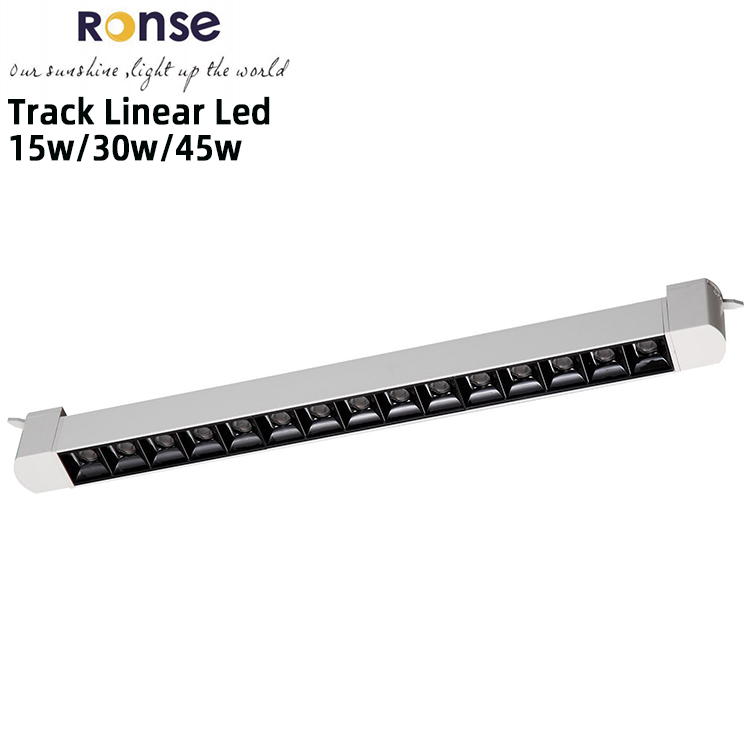In-depth Factors to Consider When Choosing LED Lights
LED lights are becoming more and more popular in the market, because of their long service life, energy saving, environmental protection and other advantages. They are gradually replacing fluorescent lamps and incandescent bulbs to become the mainstream products in the lighting industry.
However, when consumers choose commercial LED lights, it is often difficult to make a decision among many products. Don't worry, in this article, we will detail some important factors to consider when choosing LED lights, so that you can better choose the LED lights that suit your needs.
Brightness and Lumens
The brightness of LED lights is an important factor to consider. The output of a light source is measured in lumens, with higher lumens corresponding to brighter light.
When choosing LED lights, you should consider what scene the lights are used in. Because different scenes may require different levels of brightness, for example, living rooms and workplaces usually need high-brightness LED lights, while bedrooms and dining rooms can use low-brightness LED lights.
Color Temperature
The color temperature of LED lights is also a key factor. Why? Because it may directly affect the atmosphere and comfort of the lighting environment.
The color temperature of LED lights is usually expressed in Kelvin (K), and the light becomes colder as the color temperature increases. Generally speaking, the color temperature of LED lights is between warm white (about 2700K) and cold white (about 6500K). You can adjust the appropriate color temperature according to different needs.
In addition to color temperature, you can also consider the color accuracy and saturation of LED lights. In order to get a more realistic and comfortable lighting effect, you can choose LED lights with higher color saturation and color accuracy according to your needs.
Efficiency and Energy Savings
LED lights have a high energy efficiency, which is one of the important reasons for their popularity. Traditional incandescent and fluorescent lamps generate a lot of heat, but LED lights can convert most of the electricity into light energy, so LED lights consume less energy. This makes LED lights have significant advantages in terms of energy conservation and emission reduction.
You can check the energy efficiency rating of LED lights (divided into A++, A++ and A) before buying. Choose LED lights with higher energy efficiency to save energy and reduce the cost of use.
Lifespan and Durability
The service life of LED lights can reach tens of thousands of hours, which is longer than the service life of traditional lamps. This is because the LED lamp uses a solid-state light source, unlike the wearing parts such as filament or phosphor used in traditional lamps, which are not easily affected by vibration or vibration, so they can work more stably and extend the service life of the lamp.
When choosing LED lights, you can view the life indicators of the product and choose LED lights with a long life. Choosing LED lights with a long life can not only reduce the frequency of replacing lamps, but also reduce maintenance costs and improve use efficiency.
Dimming Function
Now on the market, some LED lights have dimming function. This means you can adjust the brightness of the light as needed. This is a great advantage as it makes the fixture more flexible and can meet different needs.
Different scenes have different requirements for light brightness. For example, during family gatherings or evening breaks, the lights can be dimmed to create a relaxing and pleasant atmosphere, while when you need to concentrate on work or reading, you can dim the lights to provide better illumination.
In addition, the dimming function can also help save energy and extend the service life of LED lights. By reducing the brightness of the light, you can reduce energy consumption and extend the use time of the LED lights, thus reducing the cost of use.
Light Types and Installation Methods
There are many types and installation methods of LED lights, including down lights, panel lights, light strips, etc. You can choose the right type and installation method according to your needs and preferences, so that the lamps are better integrated into your furniture design.
For example, LED down lights are usually mounted on walls or ceilings and come in a variety of different shapes and sizes. They usually have a dimming function that allows the light intensity to be changed as needed, enhancing the adaptability and practicality of the lamp.
Brand and After-Sales Service
The brand and after-sales service of LED lights are also important factors to consider when choosing LED lights. If you choose LED lights from well-known brands, you can ensure the reliability of product quality and after-sales service.
Ronse is a well-known brand focusing on the research and development, production and sales of LED lighting products, having many years of experience and technology accumulation in the LED lighting industry. Its LED lighting products cover indoor lighting, outdoor lighting, commercial lighting and other fields, and can meet the lighting needs of different occasions.
When you choose Ronse, you not only enjoy high-quality product quality and performance, but also receive professional after-sales service support to provide a full range of solutions for your lighting needs.
Conclusion
In short, factors to consider when choosing LED lights include brightness, color temperature, energy efficiency, lifespan, dimming performance, lamp type and installation method, brand and after-sales service, etc.
By considering these factors, you can choose LED lights that provide the best lighting performance, energy savings, and durability for your home or business.
